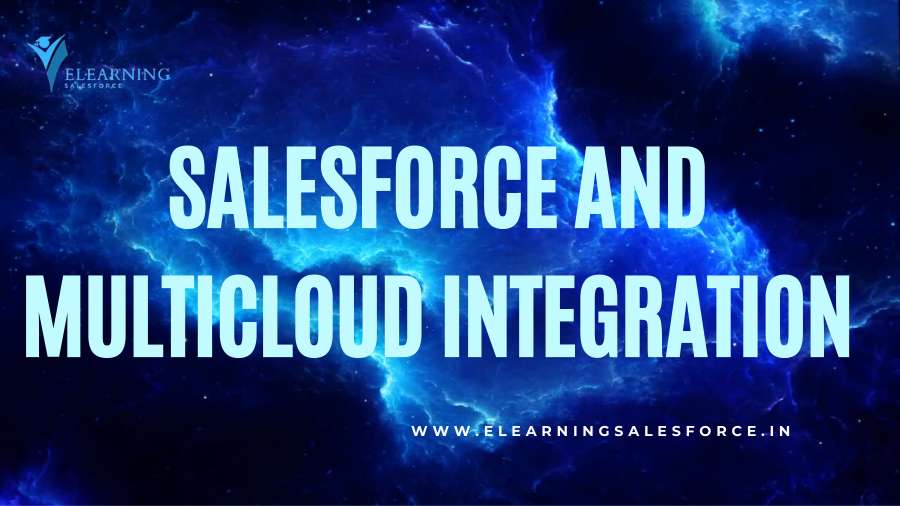Introduction to Multi-Cloud Integration
In the ever-evolving digital landscape, businesses are increasingly turning to multi-cloud integration as a strategy to optimize their operations. This approach involves the use of multiple cloud computing and storage services in a single network architecture. In this dynamic environment, Salesforce emerges as a key player, providing robust solutions for seamless multi-cloud integration.
Salesforce’s Role in Multi-Cloud Integration
Salesforce, known for its prowess in cloud-based solutions, plays a pivotal role in multi-cloud integration. It goes beyond being a Customer Relationship Management (CRM) platform, offering tools and features that facilitate smooth integration with diverse cloud environments. This ensures that businesses can harness the collective power of multiple clouds without facing integration challenges.
Benefits of Multi-Cloud Integration
The adoption of multi-cloud integration brings forth a myriad of benefits for businesses. Firstly, it enhances flexibility and scalability, allowing organizations to scale their operations without being tied to a single cloud provider. Additionally, it improves data redundancy and security, minimizing the risk of data loss and ensuring compliance with regulatory standards.
Challenges in Multi-Cloud Integration
While the advantages are significant, multi-cloud integration comes with its set of challenges. Managing multiple cloud platforms can be complex, requiring careful coordination to ensure smooth interoperability. Furthermore, maintaining seamless data flow across different clouds poses a considerable challenge for organizations seeking to embrace multi-cloud strategies.
Salesforce’s Approach to Overcoming Integration Challenges
Salesforce addresses the complexities associated with multi-cloud integration through a range of tools and features. From pre-built connectors to comprehensive APIs, Salesforce provides businesses with the means to simplify integration processes. Real-world case studies further highlight the successful implementation of multi-cloud strategies with Salesforce at the forefront.
Customization and Adaptability in Multi-Cloud Settings
Salesforce’s commitment to customization extends to multi-cloud settings. Businesses can tailor Salesforce to meet their unique integration needs, ensuring compatibility with diverse cloud environments. This adaptability is crucial as cloud technologies continue to evolve, and organizations must adjust their strategies accordingly.
Realizing Perplexity in Multi-Cloud Strategies
In the ever-changing landscape of multi-cloud strategies, businesses often find themselves in perplexing situations. Salesforce, with its intuitive solutions, helps organizations navigate through uncertainties. Whether it’s adapting to new cloud services or addressing unforeseen challenges, Salesforce provides the necessary tools to overcome perplexity.
Burstiness in Multi-Cloud Demands
The demand on cloud resources can experience sudden spikes, requiring quick and efficient handling. Salesforce equips businesses to deal with bursty situations in multi-cloud environments. Through scalable solutions and real-time analytics, Salesforce ensures that organizations can meet dynamic demands without compromising performance.
Ensuring Specificity in Multi-Cloud Integration
Generic approaches to multi-cloud integration may lead to inefficiencies. Salesforce enables businesses to deploy targeted integration strategies tailored to specific business goals. This specificity ensures that the integration process aligns with organizational objectives, optimizing the overall efficiency of multi-cloud operations.
Maintaining Context in Multi-Cloud Environments
Preserving context is vital in multi-cloud integration to ensure the seamless flow of data and processes. Salesforce acts as a guardian of context, providing insights and tools that enable businesses to maintain coherence across diverse cloud environments. This ensures that data retains its significance and relevance throughout the integration process.
User Engagement in Multi-Cloud Integration
Involving end-users in the integration process is crucial for its success. Salesforce adopts a user-friendly approach, ensuring that individuals across the organization can actively participate in multi-cloud integration. This democratization of the integration process leads to better user engagement and more effective implementation.
Active Voice in Multi-Cloud Communication
Communication is key during the integration of multiple clouds. Salesforce emphasizes the use of the active voice in communication, ensuring that updates, changes, and notifications are delivered clearly and impactfully. This proactive communication style enhances transparency and facilitates a smoother integration process.
Adopting Analogies for Multi-Cloud Understanding
The complexity of multi-cloud integration can be daunting for some. Salesforce recognizes this challenge and encourages the use of analogies to simplify complex concepts. By making multi-cloud integration relatable through analogies, Salesforce enhances understanding and promotes widespread adoption.
Conclusion
In conclusion, Salesforce emerges as a cornerstone in the realm of multi-cloud integration. Its comprehensive suite of tools, user-friendly approach, and commitment to customization make it an invaluable asset for businesses navigating the complexities of the digital era. As we look to the future, Salesforce continues to lead the way, shaping the landscape of multi-cloud connectivity.
FAQs
- Can Salesforce integrate with multiple cloud providers simultaneously?
- Yes, Salesforce is designed to integrate seamlessly with multiple cloud providers, ensuring a unified and efficient approach.
- How does Salesforce handle security in multi-cloud integration?
- Salesforce employs robust security measures to safeguard data and ensure compliance with industry standards in multi-cloud environments.
- Is customization in multi-cloud integration only for large enterprises?
- No, Salesforce’s customization features are scalable and cater to the needs of businesses of all sizes, making it accessible to enterprises of varying scales.
- Can Salesforce assist in transitioning from a single-cloud to a multi-cloud strategy?
- Absolutely, Salesforce provides tools and resources to facilitate a smooth transition from a single-cloud to a multi-cloud strategy, ensuring minimal disruption.
- What kind of support does Salesforce offer for businesses facing challenges in multi-cloud integration?
- Salesforce offers comprehensive support, including documentation, training resources, and dedicated customer support, to assist businesses in overcoming challenges in multi-cloud integration.




